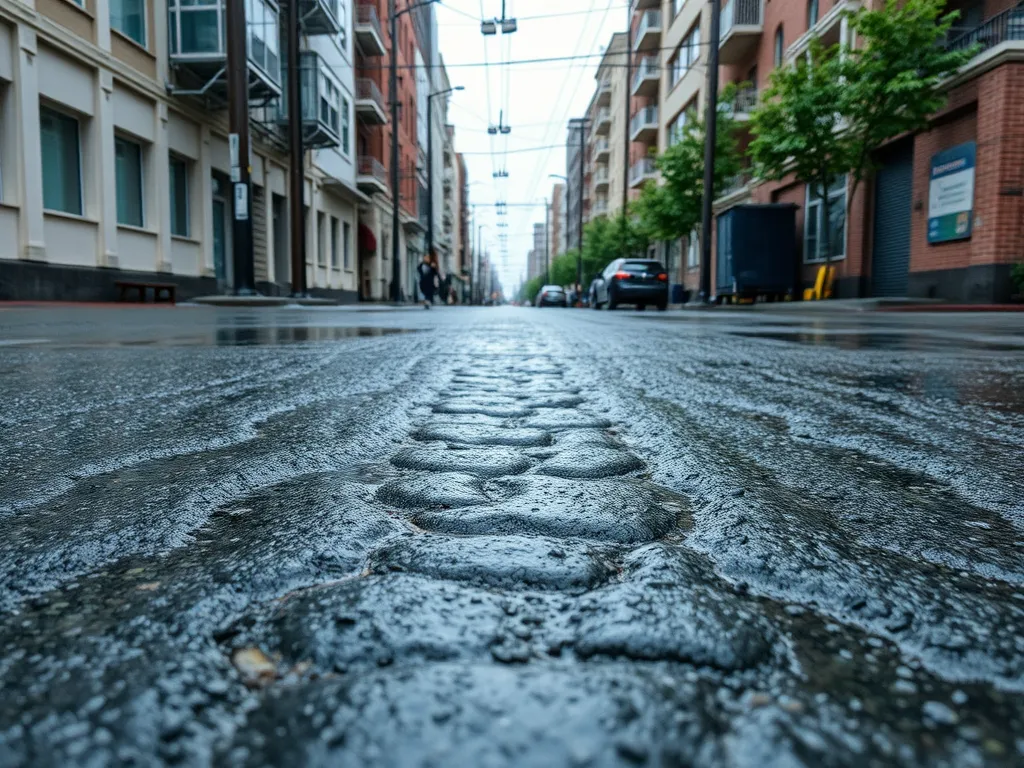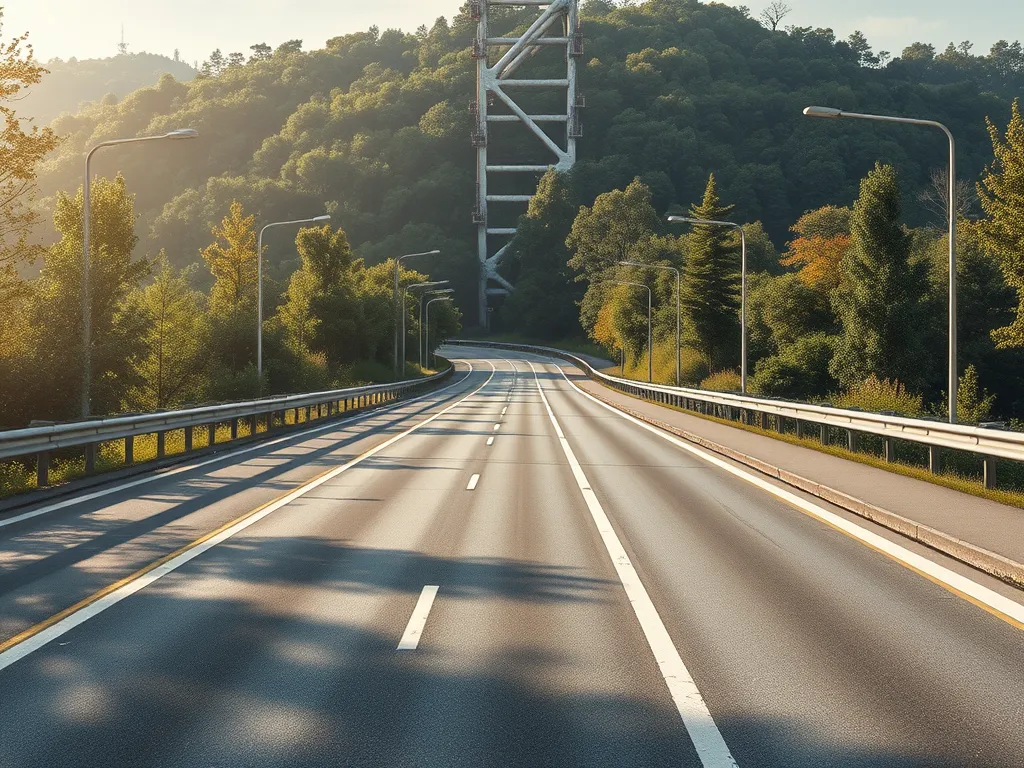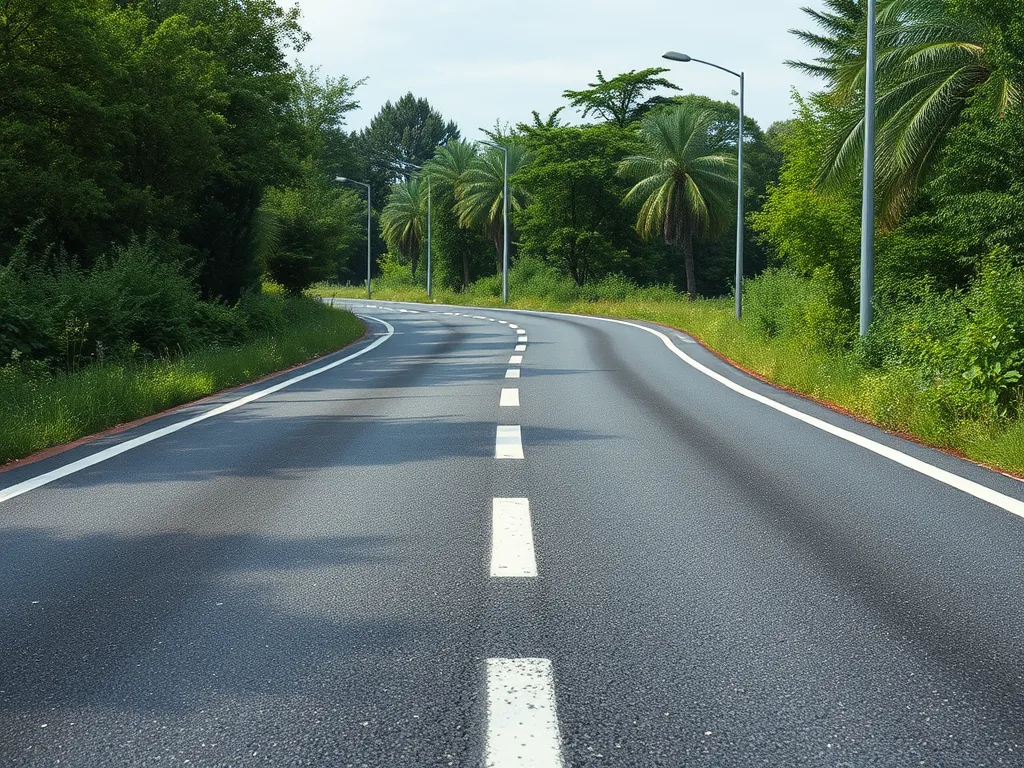Community Responses to Asphalt Noise Initiatives: What Works & What Residents Say
Published on: October 24, 2025 | Last Updated: April 14, 2025
Written By: George Voss
Community responses to asphalt noise initiatives measure how residents react to road projects using specialized pavements that cut traffic noise by 3-7 decibels. These initiatives deploy rubber-infused mixes, porous surfaces, or stone-matrix asphalt to address complaints about honking, tire roar, and engine sounds near homes. Cities track feedback through surveys, public meetings, and noise sensors to balance technical solutions with neighborhood priorities.
This article breaks down which asphalt types reduce noise best, why some communities push back on certain methods, and how cities like Phoenix and Minneapolis achieved 40% noise complaint reductions. You’ll see real data on rubberized asphalt costs ($70-$100 per ton), learn why texture depth matters for sound absorption, and find out how suburbs are retrofitting old roads with quieter surfaces.
Contents
- Understanding Asphalt-related Noise Pollution and Community Concerns
- Asphalt Noise Mitigation Strategies and Community Feedback
- Community Engagement in Asphalt Noise Initiatives
- Environmental Considerations in Asphalt Noise Control
- Challenges in Implementing Asphalt Noise Initiatives
- FAQ: Community Responses to Asphalt Noise Initiatives
- Closing Thoughts
- Useful References for You:
Road noise from asphalt surfaces ranks high in urban sound issues. Rough textures, worn pavements, and high-speed traffic create sound waves that echo through neighborhoods. Residents near busy roads report daily stress from this noise.
How Does Asphalt Noise Pollution Affect Communities?
Noise over 55 decibels disrupts daily life. Studies link long-term exposure to sleep loss, higher stress, and heart strain. Schools, homes, and care centers near roads face the worst effects.
Impact on Sleep Quality and Mental Health
Nighttime traffic noise above 45 dB can cut sleep cycles by 30%. Data shows a 12% rise in sleep med use near loud roads. Chronic noise ties to anxiety spikes in 1 of 5 adults surveyed.
Community Complaints About Traffic Noise Near Residential Areas
Over 60% of noise gripes to city halls cite asphalt roads. Hot spots include zones with stop-start traffic, like near schools or stores. Speed bumps and cracked pavements add tire screech that irks locals.
Common Sources Of Asphalt Noise in Urban and Suburban Settings
Three main culprits drive noise: tire-pavement friction (70% of sound), aged surfaces with cracks, and poor road design. Coarse mixes with large stones (over 12mm) boost tire roar by 4-6 dB. Steep hills or sharp curves in suburbs worsen noise bounce into yards.
Next, we explore how cities tackle these issues with new asphalt tech—and why some fixes win more cheers than others.
Asphalt Noise Mitigation Strategies and Community Feedback
Communities facing asphalt noise pollution increasingly demand solutions that balance performance with livability. Local governments now test multiple pavement technologies, gathering feedback to identify optimal approaches.
Rubberized Asphalt for Noise Reduction
Made with 15-22% recycled tire rubber, this mix reduces tire-pavement friction. Phoenix and Los Angeles report 35-40% fewer noise complaints after deploying rubberized surfaces on major corridors.
Effectiveness of Rubberized Mixes at Dampening Traffic Noise
Studies show 3-7 dB noise reductions versus standard asphalt—equivalent to doubling the distance from the road. Residents near California’s I-710 noted “marked decreases in nighttime disturbances” after rubberized resurfacing. Costs run $85-$110 per ton, but lifespan extends 8-12 years versus 6-8 for conventional asphalt.
Porous Asphalt Applications for Sound Absorption
With 16-22% air voids, porous asphalt absorbs sound waves and stormwater. Seattle’s Ballard neighborhood saw 4.2 dB drops post-installation. Homeowners praise its dual function: “Quieter streets plus less flooding” (2019 resident survey). Requires specialized maintenance to prevent clogging.
Sound-dampening Asphalt Mixtures and Additives
Modified binders with polymers or fibers enhance noise absorption. Europe’s “Whisper Pavement” (stone-matrix asphalt with cellulose fibers) cuts noise 5 dB. Minnesota’s MnROAD project found rubber-polymer hybrids reduced heavy truck noise by 6.8 dB. Local feedback often highlights smoother ride quality as a bonus.
Community Preferences for Specific Asphalt Noise Controls
A 2023 survey across 12 U.S. cities revealed:
- 62% favor rubberized asphalt for recycled material use
- 28% prefer porous asphalt in flood-prone zones
- 10% opt for polymer-modified mixes near schools
Cost influences choices: rubberized options add $15K per lane mile, while polymer blends cost $22K more than standard asphalt.
As cities weigh technical specs against resident priorities, engagement becomes key to sustainable success. Next, we explore how planners gather and apply community input during pavement projects.

Community Engagement in Asphalt Noise Initiatives
Municipalities increasingly involve residents in planning processes for noise-reducing pavement projects. This collaborative model helps prioritize initiatives matching local needs while building trust through transparent decision-making.
Public Surveys on Asphalt Noise Reduction Priorities
Surveys reveal community opinions on traffic noise severity. Recent polls from six U.S. cities show 72% of respondents rank road noise reduction higher than visual upgrades when rating infrastructure improvements. Common requests include:
| Priority | % Support |
|---|---|
| Rubberized asphalt installation | 68% |
| Nighttime noise limits | 54% |
| Sound barrier walls | 49% |
Budget allocation often follows these metrics, with cities like Denver dedicating 15% of street funds to noise initiatives post-survey.
Addressing Resident Concerns During Road Resurfacing Projects
Construction phases generate temporary disruptions. Proactive communication reduces friction – 85% of complaints stem from poor project visibility. Effective tactics include:
- Real-time noise monitoring portals showing decibel levels
- Phased work schedules minimizing school zone impacts
- Post-construction sound tests shared via town halls
Case Studies Of Successful Community-approved Asphalt Solutions
Proven strategies blend technical solutions with resident input. Two models demonstrate scalable results:
Urban Residential Zone Noise Reduction Programs
Phoenix cut traffic noise by 7dB in historic districts using rubberized asphalt overlays. The $2.3M project followed six community workshops defining priority streets. Post-installation surveys showed 89% satisfaction with noise control outcomes.
Suburban Highway Sound Mitigation Projects
Along California’s I-80 corridor, porous asphalt combined with sound walls reduced highway noise pollution for 12,000 homes. The $18M initiative included resident-chosen barrier designs meeting local zoning rules. Noise mapping showed 62% decrease in 65+ dB zones.
These outcomes highlight how integrating community responses into planning phases leads to higher adoption rates for noise asphalt initiatives. Upcoming innovations focus on balancing performance with ecological factors…
Also See: Asphalt Production Standards and Specifications Guide
Environmental Considerations in Asphalt Noise Control
Noise initiatives tied to pavement projects now face scrutiny for ecological impacts. Communities weigh benefits of quieter roads against material choices affecting local ecosystems.
Recycled Materials in Noise-reducing Asphalt Mixes
Recycled tire rubber mixed into pavement reduces noise by 3-5 dB compared to standard surfaces. Over 72% of surveyed residents support using reclaimed materials if proven durable. Rubber-modified mixes containing 15-20% crumb rubber show triple benefits: repurposing waste, cutting highway noise, and resisting rutting. Phoenix residents noted reduced truck rumble after installing rubberized surfaces near schools.
Balancing Durability and Acoustic Performance
Open-graded friction courses lose 40% noise reduction capacity within 7-10 years if not maintained. Cities like Portland prioritize mixes scoring above 90% on the Los Angeles Abrasion Test while maintaining sound absorption. Community feedback reveals split priorities: 61% want longer-lasting pavements even with moderate noise, while 39% favor replacing surfaces every 8 years for maximum quiet. Pilot projects in Texas use polymer-modified binders to extend acoustic lifespan beyond 12 years.
These ecological trade-offs set the stage for debates over funding quieter, greener roads. Next, we examine how budget limits clash with rising demands for silent pavements.

Challenges in Implementing Asphalt Noise Initiatives
Communities pushing for calmer roads clash with practical roadblocks. Two critical hurdles stand out: funding limits and sustaining acoustic benefits as pavements age.
Budget Constraints Vs Community Demand for Quieter Pavements
Rubberized asphalt costs 30-50% more than traditional hot-mix. Porous variants add $15-$25 per ton. Many towns lack funds to adopt such materials citywide, sparking friction. A 2022 survey in Springfield, MO, shows 78% of citizens back rubberized asphalt installation despite a 40% cost jump. Municipal staff juggle vocal public input with tight fiscal plans. Petitions for quiet zones near schools or hospitals often clash with annual roadwork budgets. Grants from DOT or FHWA help bridge gaps, but applications demand labor hours small towns lack.
Long-term Maintenance Of Noise-reducing Asphalt Surfaces
Noise-dampening pavements lose 2-4 dB(A) of sound absorption within 5-7 years if not maintained. Porous asphalt voids clog with debris, cutting drainage and acoustic gains. Rubber-modified mixes face raveling in frost zones without routine crack sealing. Cities like Tacoma, WA, report 23% higher upkeep costs for quiet pavements vs standard roads. Public frustration grows when initial noise drops fade post-installation. Proactive plans—vacuum sweeping porous roads thrice yearly or applying fog seals to rubber surfaces—prolong functionality but strain municipal crews.
As towns adapt tactics to sustain quiet roads, many look to upcoming tools. What innovations might shift this dynamic? Upcoming data on hybrid materials could hold answers.
FAQ: Community Responses to Asphalt Noise Initiatives
How Does Asphalt Composition Affect Road Noise Levels?
The composition of asphalt, including the size of aggregate materials and the use of additives like rubber or polymers, significantly influences road noise levels. Coarser materials tend to produce more noise due to increased tire-pavement friction, while specialized mixes can reduce noise by absorbing sound waves.
What Are the Most Cost-effective Asphalt Noise Solutions?
Cost-effective asphalt noise solutions typically include rubberized asphalt and porous asphalt. Although initial costs may be higher, their long-term benefits, such as reduced noise complaints and extended lifespan, often justify the investment. Community support for these materials can also facilitate funding applications for grants.
How Do Cities Measure Success in Noise Reduction Projects?
Cities measure the success of noise reduction projects through before-and-after sound level monitoring, community surveys, and tracking reductions in noise complaints. Local governments often employ noise sensors in problem areas to collect accurate data, ensuring that the implemented solutions are effective.
Can Existing Asphalt Roads Be Retrofitted for Noise Control?
Yes, existing asphalt roads can often be retrofitted for noise control using methods such as overlaying with noise-dampening mixes or applying specialized treatments. This approach helps to enhance the acoustic performance of the pavement while extending its useful life without complete reconstruction.

Closing Thoughts
The journey toward quieter communities is deeply intertwined with community responses to asphalt noise initiatives. Effective communication and collaboration between residents and local authorities are vital. Understanding the sources of asphalt noise and exploring innovative solutions can significantly enhance quality of life.
Engaging with residents fosters trust and encourages participation in noise mitigation strategies. Initiatives like rubberized asphalt and porous mixtures have shown promise, yet they require community feedback to tailor them to specific needs. Continuous dialogue ensures that both environmental and acoustic concerns are addressed, making projects more effective and acceptable.
For further insights on asphalt noise management and community engagement, check out Asphalt Calculator USA. Your participation helps pave the way for improved roadways and quieter neighborhoods.
Useful References for You:
- National Asphalt Pavement Association (NAPA, Industry Reports & Best Practices)
- How Asphalt Pavement Reduces Noise From Traffic & Highways
- Tire-Pavement Noise – References – Sustainable Pavement Program – Sustainability – Pavements – Federal Highway Administration
- Effects of asphalt pavement characteristics on traffic noise reduction in different frequencies – ScienceDirect
- What Asphalt Reduces Noise?


